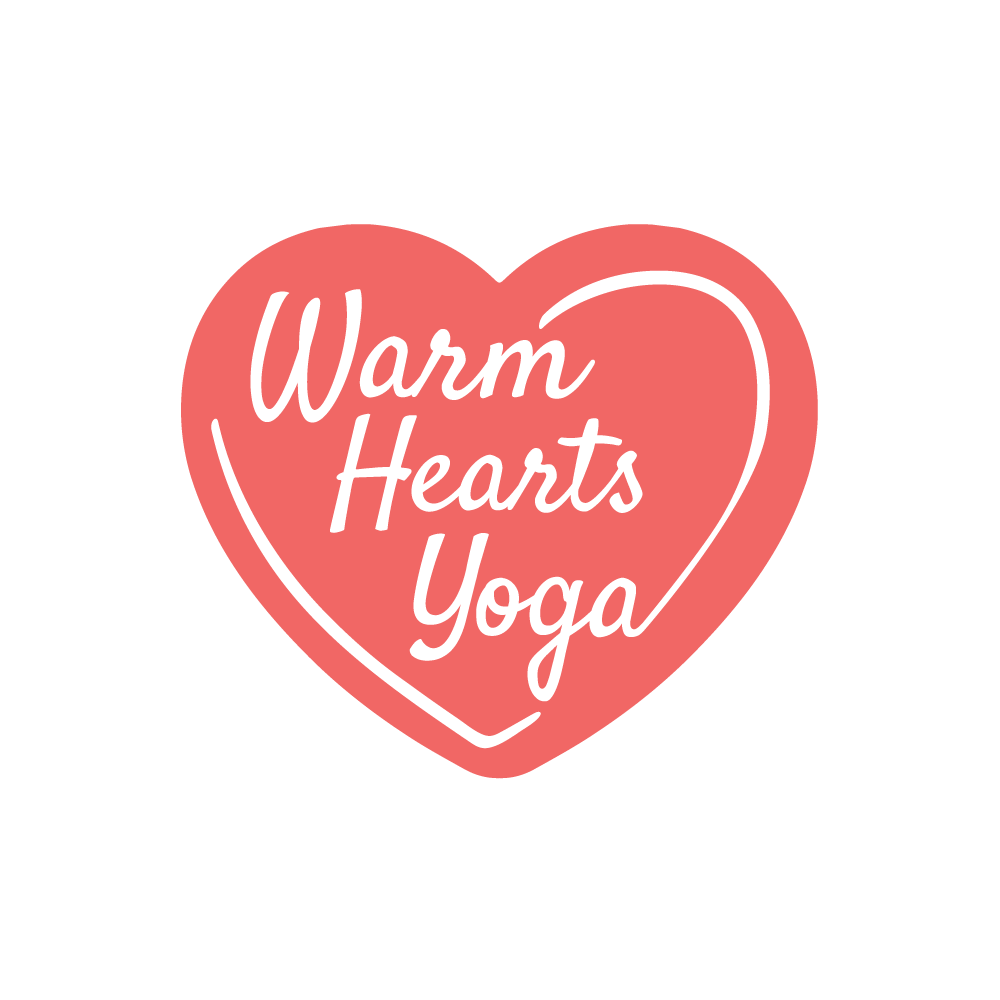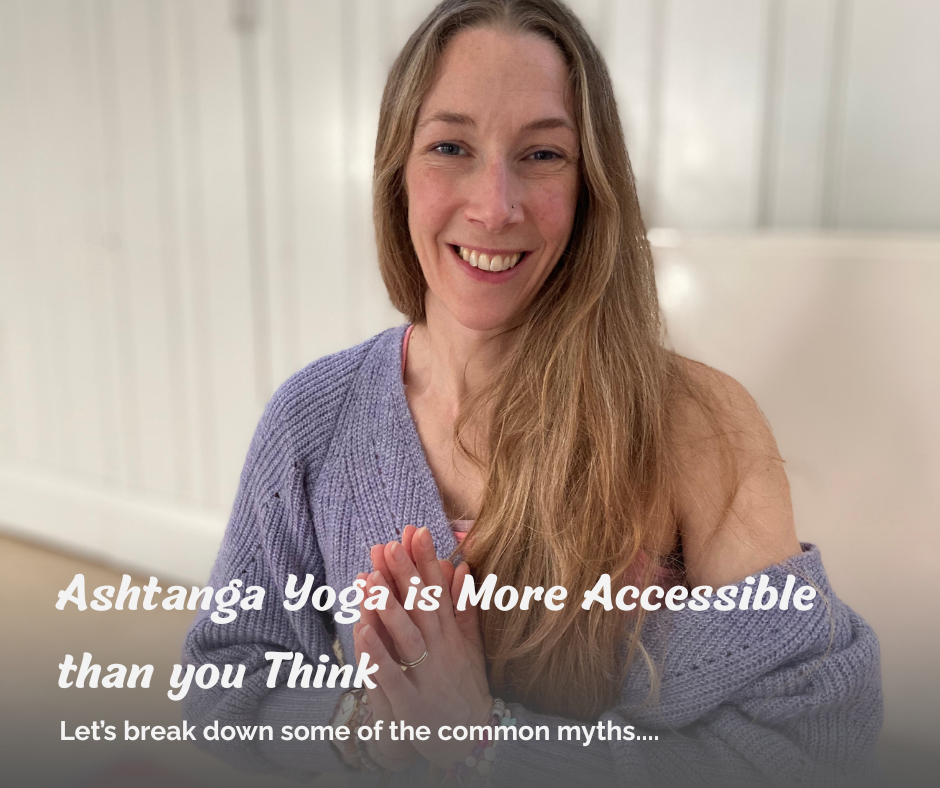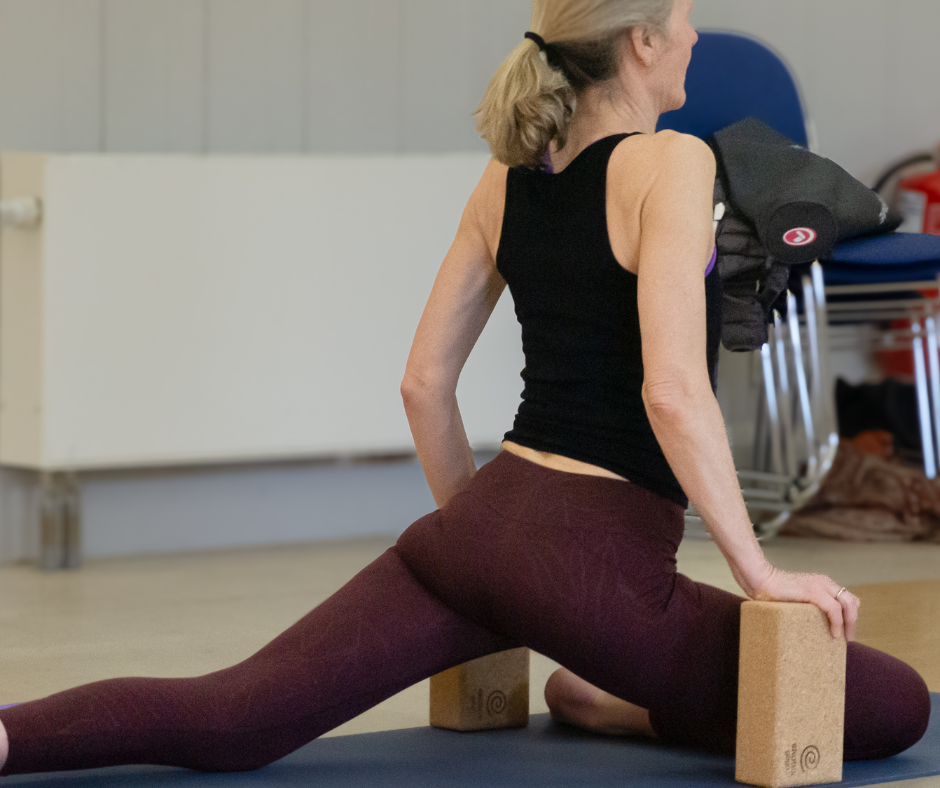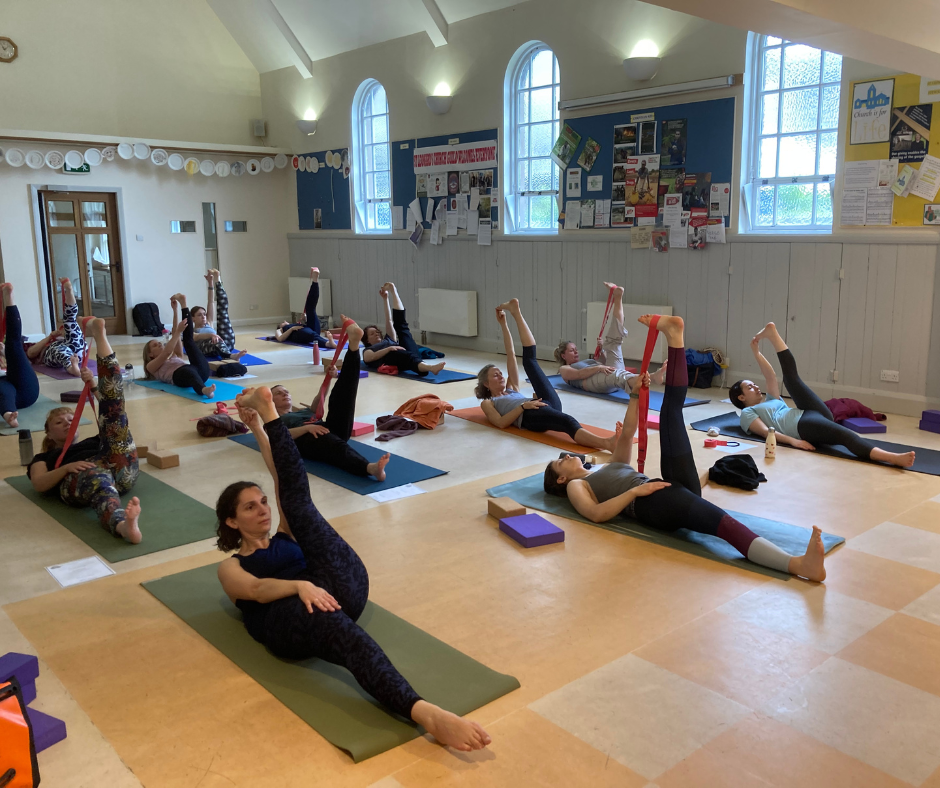Ashtanga Yoga is More Accessible Than You Think
Let’s break down some of the common myths
The Reputation of Ashtanga Yoga
As an Ashtanga practitioner I am aware of the reputation it has. Ashtanga Yoga is thought of as rigid, strict, with an emphasis on creating the poses perfectly no props or modifications allowed. When you think of Ashtanga Yoga you might imagine a fast paced class, people sweating as they tie themselves in knots and power through vinyasa after vinyasa. The poses we associate with Ashtanga are usually the advanced ones, requiring a certain amount of flexibility, strength, or both.
And as someone who regularly practices arm balances, inversions, and complex postures I am aware of the irony in me sitting here telling you it’s not like that.
The simple fact is that Ashtanga can be powerful, athletic, gymnastic, but it doesn’t have to be. And it certainly doesn’t start that way for most of us.
Where it really begins
One of the biggest myths about yoga, and especially styles such as Ashtanga, is that you have to be strong and flexible to start. In fact, the strength and flexibility will build slowly over time. The Ashtanga sequence is designed carefully and cleverly to give you the tools you need to progress through it. And an experienced teacher will guide you through this with skill.
The very first sequence you encounter, Surya Namaskar, gives you the foundations for the rest of your practice. You learn to flex and extend the spine, to take weight in your hands as well as your feet, and to move with the rhythm of your breath. In the beginning this sequence will leave you feeling tired and breathless, and some of the postures will be challenging. But slowly, gradually, you will start to feel the differences.
The magic of repetition in Ashtanga Yoga
That is one of the beautiful things about practicing a set sequence. You might think it will be boring, but instead it shows up the changes. When you start practicing it requires all your attention just to remember the order of the asanas. There is no room in your head for boredom.
With repetition comes familiarity, and you start having to think less about what comes next. This is where the magic begins. With no need to worry about sequencing, you can focus your attention elsewhere, developing a deep awareness of body, breath, and more.
And coming back to the same postures day after day means you notice your progress. That progress might be the first time you manage a posture that has been challenging for you. It might be finding a tricky bind in a twist. It could be that you notice you are no longer huffing and puffing through the practice but instead you have found a steady breath. And maybe one day you notice that your mindset has changed, so it is no longer simply about the postures, but instead your practice gives you a tool to travel inwards.
It is not about perfect postures
Because it’s really not about the postures. The idea that in Ashtanga we are all striving to make a perfectly aligned shape is a myth. There are so many ways to approach the postures, and so many ways they can be changed and adapted. Many asanas have multiple variations, and a skilled teacher can help you explore to find the right one for you.
Sometimes a well-placed prop can provide space, stability, or support and make a shape that seemed impossible suddenly a little more approachable. Finding perfect poses is not what it is about. Rather, it is about showing up, consistently, whenever you can.
Making the practice your own
Ashtanga has the reputation for being difficult, when in fact it can be one of the most accessible forms of yoga there is. It is a method that gives us a practice for life. The sequence can be adapted for you.
So if you want to master a handstand, deepen your backbend, or build the strength you need for arm balances and inversions we can do that. If you want time to move gently and breathe mindfully, we can do that. Want to practice for 20 minutes, 45 minute, or 2 hours? That is fine too.
This is the heart of Ashtanga Yoga. It is your practice, you make it what you need, and of course your teacher will guide you along the way.
So, if you have ever thought Ashtanga was not for you, maybe it is time to give it another look. You might be surprised by what you find.
If you are curious about Ashtanga, I would love to welcome you to class. For some people, the practice is a way to move gently, breathe, and feel steady. For others, it becomes a place to explore deeper backbends, arm balances, and more challenging shapes. Wherever you are, there is space for you. You can see my current Ashtanga class timetable and book your place through this link. Want a little extra guidance? I run introduction to Mysore courses at various times through the year, giving you a step by step guide to this practice. Looking forward to seeing you on the mat.




